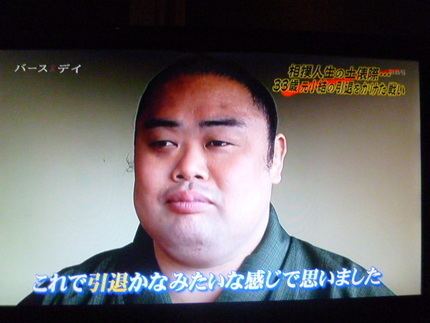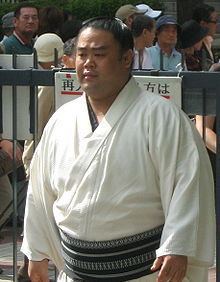Debut September 2001 Retired April 2012 Special Prizes Technique (1) Role Sumo wrestler Height 1.76 m Spouse Emi Asai (m. 2007) | Highest rank Komusubi (March 2004) Championships 1 (Juryo) Name Kakizoe Toru Makuuchi rank Komusubi Weight 138 kg | |
 | ||
Born Kakizoe Toru August 12, 1978 (age 47) Oita ( 1978-08-12 ) Similar People Tochinonada Taiichi, Hokutoriki Hideki, Miyabiyama Tetsushi, Iwakiyama Ryuta, Asasekiryu Taro | ||
Kakizoe Tōru (垣添 徹, Kakizoe Tōru) (born August 12, 1978 in Usa City, Ōita Prefecture, Japan), is a former sumo wrestler. A former amateur champion, he turned professional in 2001 and reached the top division in 2003. His highest rank was komusubi, which he held for just one tournament. He won one special prize, for Technique. After injury problems he fell to the third makushita division in 2011 and retired in April 2012, becoming a sumo coach. Since 2013, he is part of ex-yokozuna Musashimaru's new Musashigawa stable.
Contents
Career

Kakizoe was an amateur sumo champion at Nippon Sport Science University, winning the Kokutai (Japan Games) and the All Japan University Championship in 2000, his final year, which earned him the amateur yokozuna title. He joined Musashigawa stable, which, at the time, was one of the strongest in sumo with yokozuna Musashimaru and other successful former collegiate competitors such as Dejima and Miyabiyama amongst its wrestlers. Because of his amateur success, Kakizoe was given makushita tsukedashi status, meaning he was able to debut at the makushita 15 ranking. He fought his first professional bout in September 2001, fighting under his real name. Unusually, he never adopted a traditional shikona. He rose to the jūryō division in March 2003 and the top makuuchi division in September 2003.
Kakizoe's rank peaked at komusubi after the January 2004 tournament when, ranked maegashira 5, he achieved a result of 11-4 and the technique prize. He failed to retain his san'yaku rank for more than a single tournament, but mostly remained amongst the top half of maegashira for the next few years. However, he suffered a big setback in May 2007, losing eleven bouts in a row before pulling out of the tournament citing a fracture to his right knee. He could manage only six wins on his return in July and slid to the lowest rung on the top division ladder for the September tournament. He produced a comfortable 9-6 score there to maintain his top division status, but remained near the bottom of makuuchi for the next two years.
In January 2010, he rose to maegashira 4 and fought his first bout against a yokozuna since his injury. Due to the absence of Chiyotaikai and Kotomitsuki, on the final day he took part in the san'yaku soroibumi ceremony. He finished the tournament with a respectable 6-9 record, but was unable to produce a kachi-koshi or winning score in the next four tournaments either.
Kakizoe's 3-12 performance in September 2010 saw him demoted to jūryō for the first time and he lost sekitori status after scoring only 4-11 at Juryo 9 in January 2011. Despite only scoring a make-koshi 3-4 in the May 2011 "technical examination" tournament, he was nonetheless promoted back to jūryō because of the large number of slots available after the forced retirements of many wrestlers following a match-fixing scandal. However, his return to jūryō was short-lived as he turned in a disastrous 1-14 score, his ninth consecutive make-koshi.
Retirement from sumo
Troubled by a foot injury, Kakizoe fell to Makushita 56 for the May 2012 tournament, the sixth lowest rank ever held by a former san'yaku wrestler. He announced his retirement before the tournament began, and stayed in sumo as a coach at his stable (now renamed Fujishima stable) under the elder name Oshiogawa Oyakata. In 2013, when his former stablemate Musashimaru established his own Musashigawa stable, Kakizoe moved with him.
Fighting style
Kakizoe was an oshi-sumo specialist, preferring pushing and thrusting techniques. His most common winning move was oshi-dashi (push-out), which accounted for around 43 percent of his career victories. He was vulnerable to defeat if his opponents grab hold of his mawashi.
Family
Kakizoe is married, with two children.
